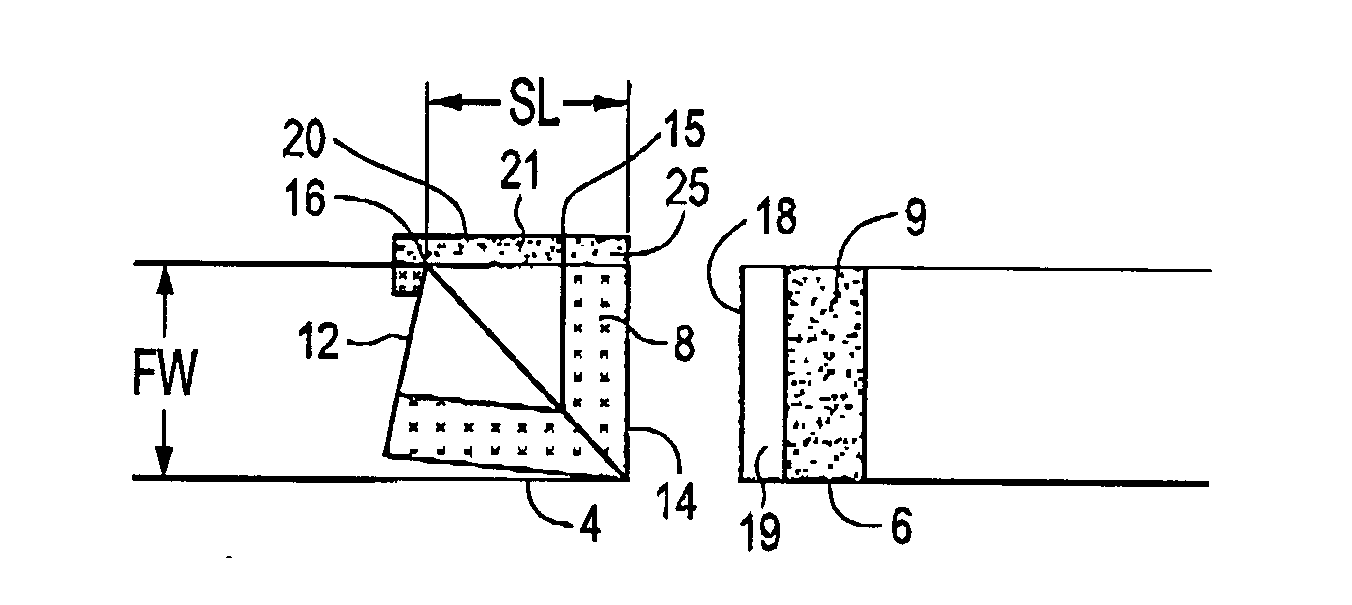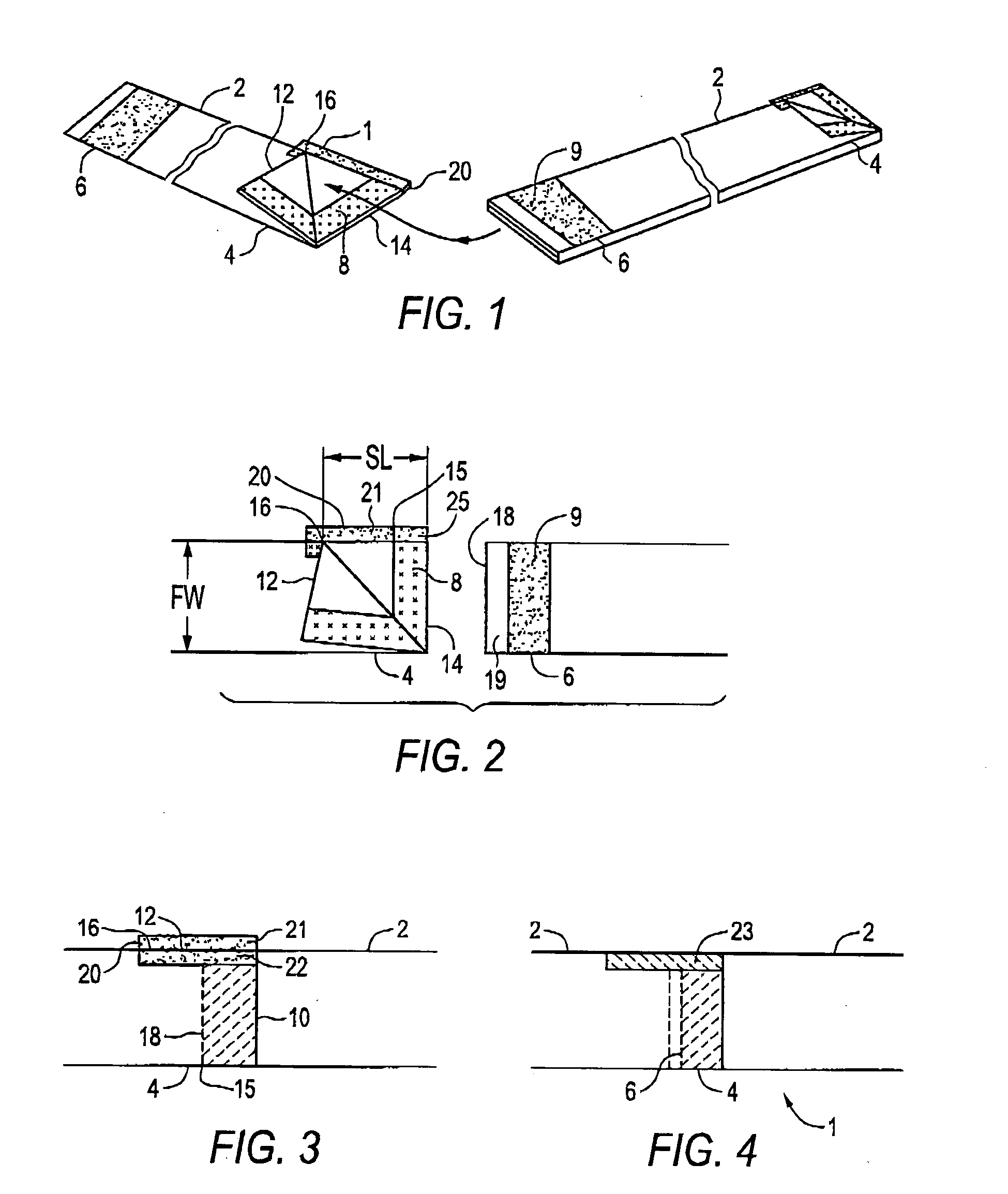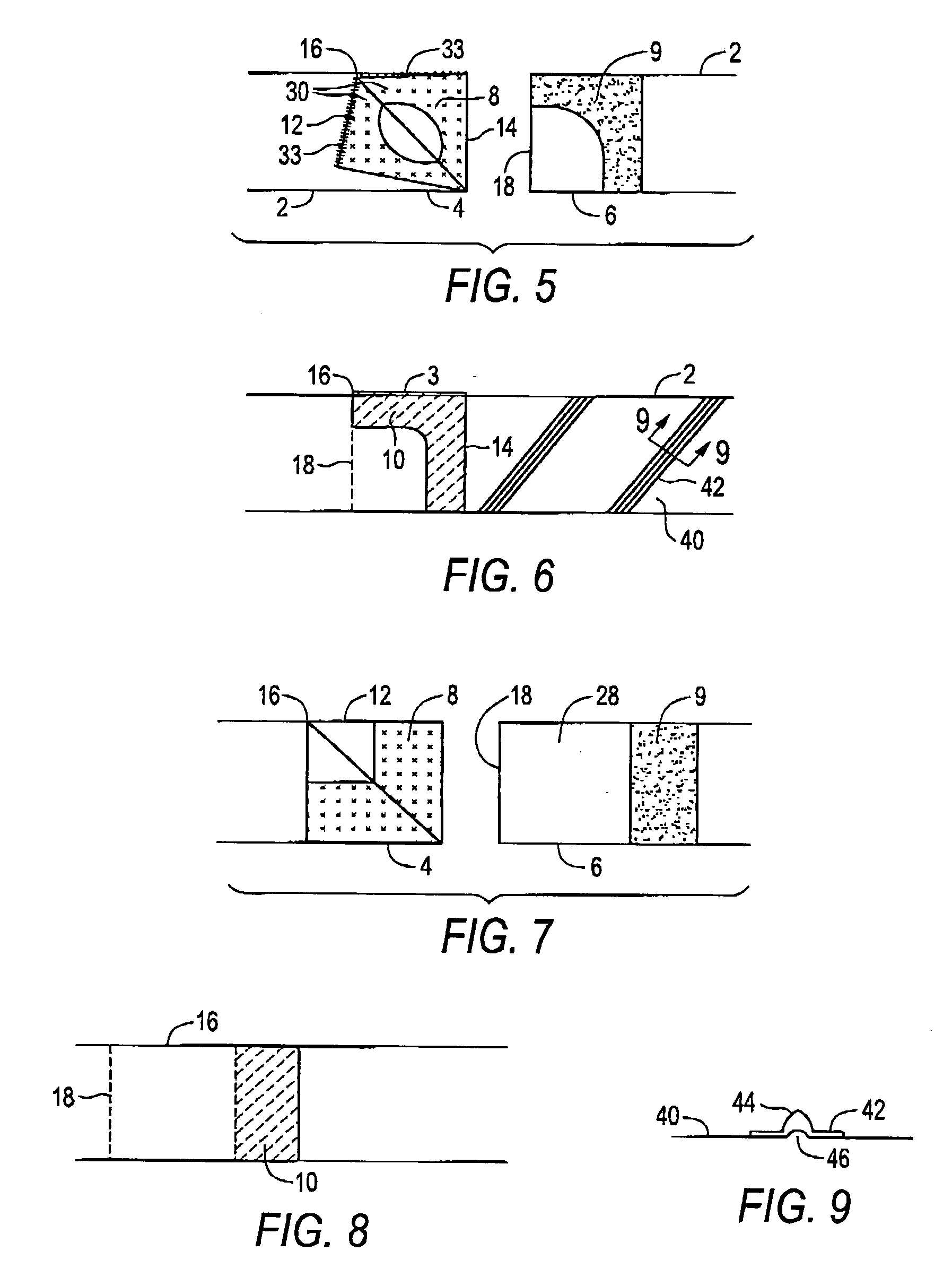Coupler for flexible hose sections
- Summary
- Abstract
- Description
- Claims
- Application Information
AI Technical Summary
Benefits of technology
Problems solved by technology
Method used
Image
Examples
Embodiment Construction
[0025]FIG. 1 illustrates a plurality of hose sections 2, each hose section 2 having, at one end a female portion 4 and at an opposite end a male portion 6. As illustrated in FIG. 4, the male portion of one hose section 2 is coupled inside the female portion 4 of an adjacent hose section 2 to form a flexible hose apparatus 1.
[0026] A first element 8 of a hook and loop coupling fastener 10 is attached to an inside surface of the female portion 4, and a corresponding second element 9 of the hook and loop coupling fastener 10 is attached to an outside surface of the male portion 6. FIG. 3 illustrates schematically the first and second elements 8, 9 engaging to form the hook and loop coupling fastener 10. One of a hook or a loop element is located as the first element 8, and the other as the second element 9.
[0027] A single slit 12 extends from the end edge 14 of the female portion 4 longitudinally along the hose section 2 to a slit end 16. The balance of the end edge 14 of the female ...
PUM
 Login to View More
Login to View More Abstract
Description
Claims
Application Information
 Login to View More
Login to View More - R&D
- Intellectual Property
- Life Sciences
- Materials
- Tech Scout
- Unparalleled Data Quality
- Higher Quality Content
- 60% Fewer Hallucinations
Browse by: Latest US Patents, China's latest patents, Technical Efficacy Thesaurus, Application Domain, Technology Topic, Popular Technical Reports.
© 2025 PatSnap. All rights reserved.Legal|Privacy policy|Modern Slavery Act Transparency Statement|Sitemap|About US| Contact US: help@patsnap.com



